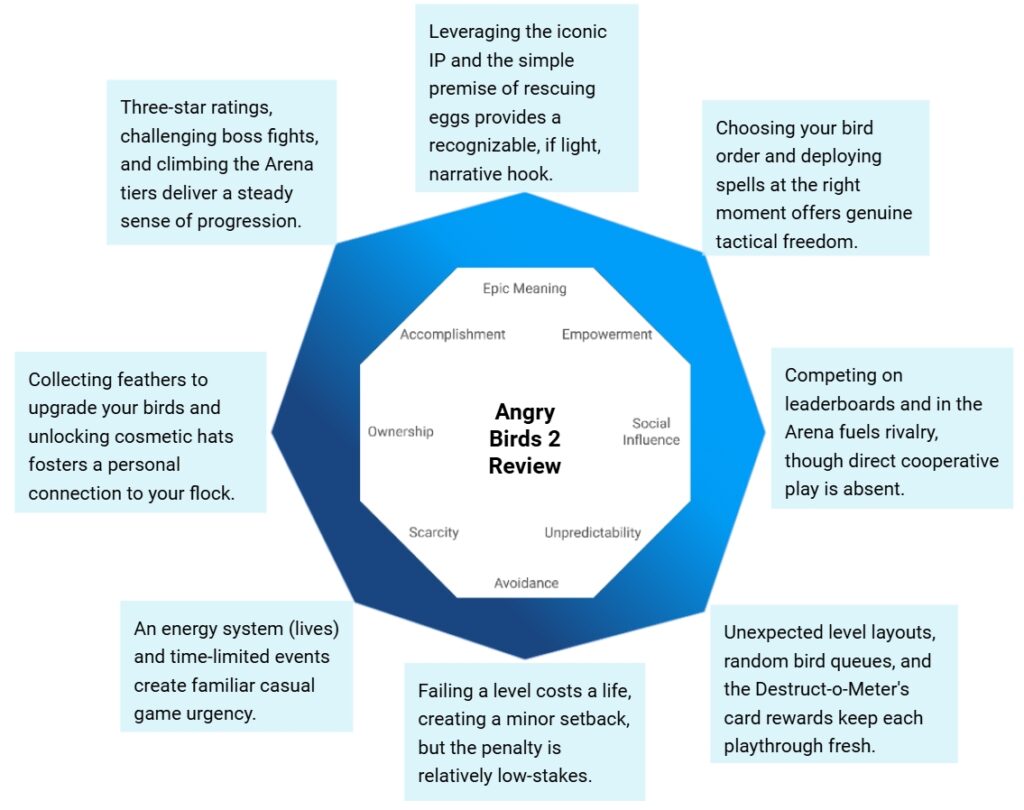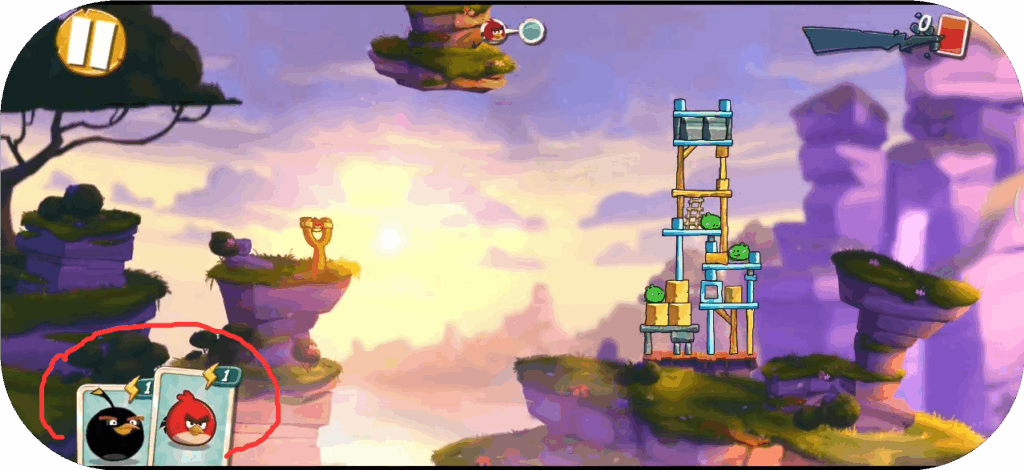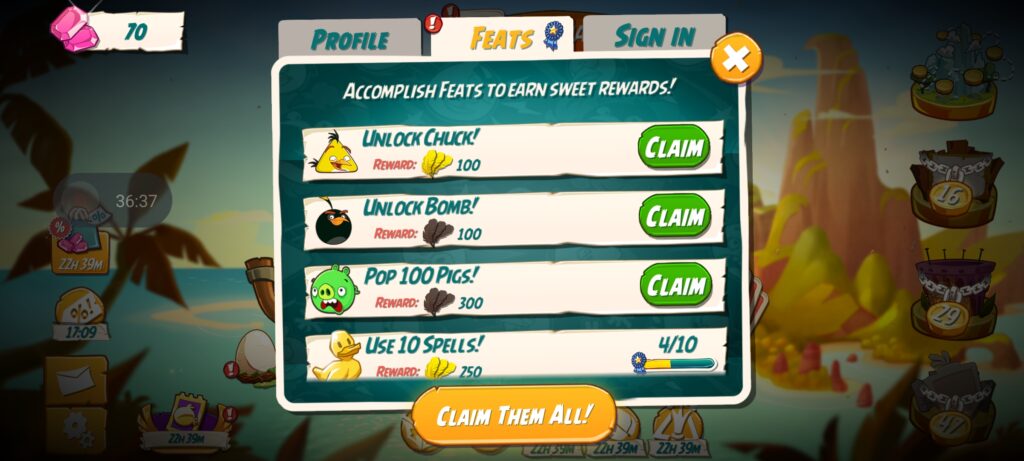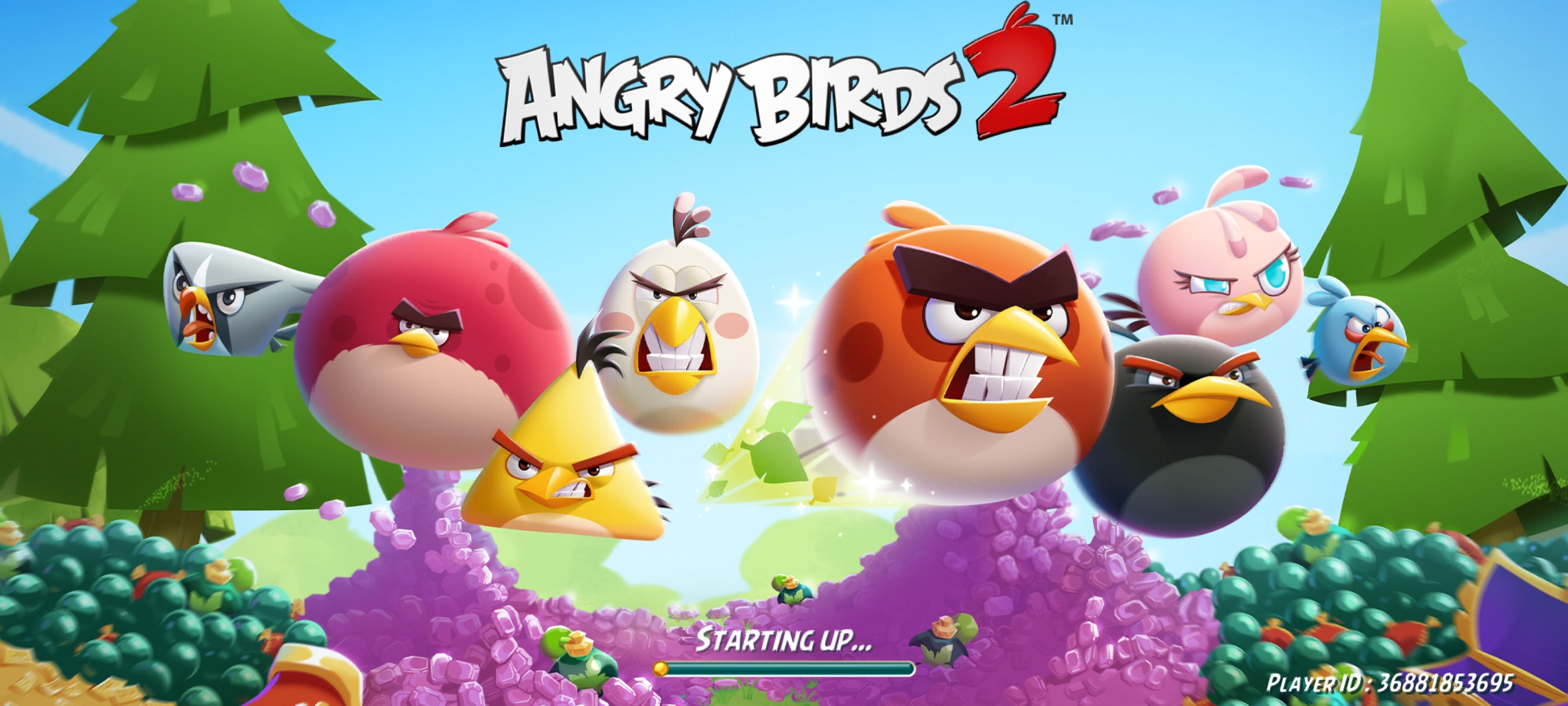Angry Birds 2 keeps the slingshot core of the series but adds twists like card-based bird selection, spells, and multi-stage levels. The familiar humor and explosive physics remain, yet new mechanics demand more planning and resource management.
Today, 09GameReview will use the Octalysis Framework to break down the game’s Strategy and Style.
Octalysis Rating Table
| Core Drive | Score (1–10) | One-Line Description |
|---|---|---|
| Meaning | 6 | Leveraging the iconic IP and the simple premise of rescuing eggs provides a recognizable, if light, narrative hook. |
| Accomplishment | 8 | Three-star ratings, challenging boss fights, and climbing the Arena tiers deliver a steady sense of progression. |
| Empowerment | 7 | Choosing your bird order and deploying spells at the right moment offers genuine tactical freedom. |
| Ownership | 7 | Collecting feathers to upgrade your birds and unlocking cosmetic hats fosters a personal connection to your flock. |
| Social Influence | 6 | Competing on leaderboards and in the Arena fuels rivalry, though direct cooperative play is absent. |
| Scarcity | 6 | An energy system (lives) and time-limited events create familiar casual game urgency. |
| Unpredictability | 7 | Unexpected level layouts, random bird queues, and the Destruct-o-Meter’s card rewards keep each playthrough fresh. |
| Avoidance | 5 | Failing a level costs a life, creating a minor setback, but the penalty is relatively low-stakes. |
GScore: 344
Evaluation Notes:
Scoring range: 1–10. Higher scores reflect stronger implementation of the core drive and greater player motivation.
GScore (Gamification Score): Calculated using the Octalysis Framework tool.
Octalysis Radar Chart

Detailed Analysis
1. Meaning (6/10)
The premise is simple, but the iconic conflict between the birds and the egg-stealing pigs remains as charming as ever. Revisiting classic characters like Red and Chuck provides a strong sense of familiarity, even if the overarching story takes a backseat to the gameplay.
2. Accomplishment (8/10)
This is a key driver. The pursuit of three-star ratings on challenging levels, overcoming giant boss pigs, and the weekly grind to advance in the Arena ranks provide clear, motivating goals. There’s always a tangible achievement to chase.
3. Empowerment (7/10)
The strategic layer is significantly deepened by the need to plan your bird order. Do you use a powerful bird early to clear a structure, or save it for later? Combining bird abilities with well-timed spells adds a satisfying layer of tactical experimentation.

4. Ownership (7/10)
Spending feathers to permanently upgrade your birds’ capabilities gives a real sense of investment. While hats are purely cosmetic, collecting them allows for personal expression, making your flock feel uniquely yours.

5. Social Influence (6/10)
The drive comes mainly from asynchronous competition. Seeing your name on the global leaderboard or trying to outscore rivals in the Arena provides a strong motivational pull, even without direct player interaction.
6. Scarcity (6/10)
The energy system (lives) is a classic mobile mechanic that limits play sessions and encourages returning later. Daily quests and limited-time events effectively create FOMO (Fear Of Missing Out), prompting regular logins.
7. Unpredictability (7/10)
The game avoids feeling repetitive. You never know exactly which birds you’ll get in your queue for a level, and the multi-stage designs with hidden bonus areas or surprise boss fights maintain a healthy level of curiosity.
8. Avoidance (5/10)
The primary loss aversion comes from wasting a life on a difficult level or missing the chance to complete a timed event. However, the penalty is mild, and lives regenerate, preventing the game from feeling overly punitive.
Overall Summary & Recommendation
Angry Birds 2 successfully modernizes the classic formula with strategic card mechanics and deeper progression. It’s a solid recommendation for players seeking a physics-based puzzle game with tactical depth, though its energy system and focus on competitive rather than cooperative social play may not suit everyone.


Leave a Reply